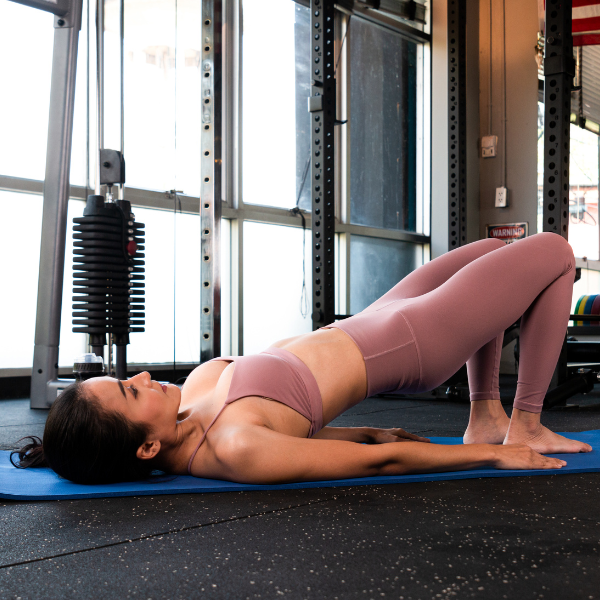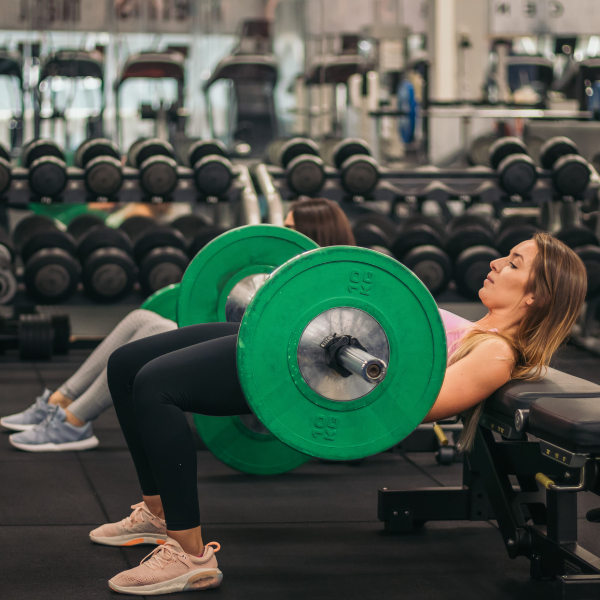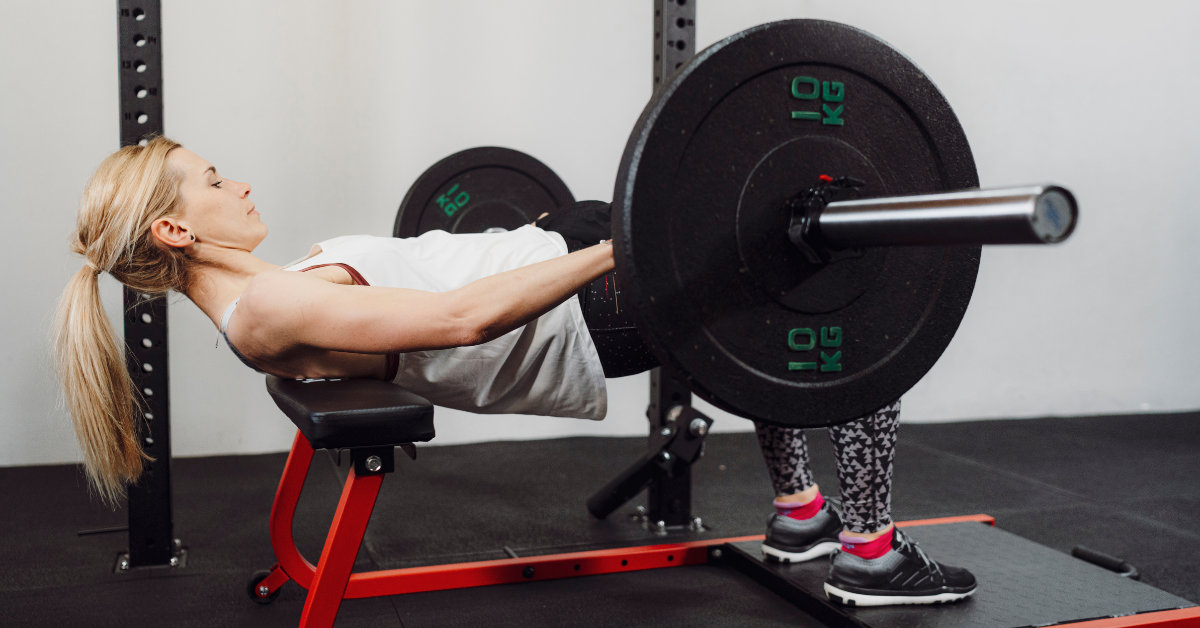When it comes to sculpting a strong and shapely posterior, the debate between glute bridges and hip thrusts is one that fitness enthusiasts often encounter.
Both exercises are touted for their ability to fortify the glutes, but each has unique nuances that can make all the difference in your workout routine.
In this comparative analysis, we'll dive deep into each exercise's technique and benefits, helping you understand which might be the best fit for your fitness goals.
Understanding Glute Bridges and Hip Thrusts
Glute Bridges: Technique and Benefits

The glute bridge is a cornerstone of strength training, homing in on the gluteus maximus, medius, and minimus, not to mention the hamstrings and core.
You start out flat-backed, knees bent, feet grounded, hip-distance. Arms by your side, thrust your hips skyward to form a rigid line shoulder-to-knee. Then, squeeze your glutes and engage your core to block any back dip.
This exercise's no-fuss nature welcomes all levels of fitness. Use only your body weight, or toss in a barbell or band for an extra bite. There are many perks: a posterior chain powerhouse, a core stabilizer, and even a hip flexor loosener.
Hip Thrusts: Technique and Benefits

Hip thrusts, often hailed as the superior exercise for glute development, build on the foundation of the glute bridge.
The starting position for a hip thrust is similar to a glute bridge, but instead of your back being flat on the ground, your upper back rests against an elevated surface, such as a weight bench. From this starting position, you launch into a hip press skyward, ideally with a barbell adding weight at your hips, until you achieve a linear path from shoulders to knees.
This exercise doesn't just pump up the glutes but also ropes the hamstrings and lower back. Thanks to a grander range of motion and the ability to stack on serious weight, it excels in muscle augmentation and strength surge.
For athletes, it's a linchpin for explosive might and hip drive, a staple in the sports training arsenal. But precision in execution is key to dodging injury and tapping into the hip thrust's full trove of gains.
Key Differences Between Glute Bridges and Hip Thrusts
Range of Motion and Muscle Activation
When it comes to glute bridges and hip thrusts, they're distinct in their range of motion and muscle activation.
Glute bridges, often bodyweight-centric, provide a shorter range of motion, serving beginners well or as a glute activation warm-up. They primarily target the gluteus maximus and secondarily engage the core and hip flexors.
Hip thrusts step it up with a deeper range of motion that can amplify muscle development and strength. Propped by your upper back on a bench and possibly weighted for an added challenge, you dip your hips beneath bench level, then thrust up. This deeper dive intensifies the workout for the gluteus medius, maximus, and hamstrings, making the hip thrust a celebrated exercise for crafting powerhouse glutes.
Equipment and Space Requirements
Equipment and spatial considerations also come into play with these exercises. Glute bridges are the epitome of simplicity: bodyweight-driven, they demand scant space, fitting seamlessly into any fitness routine at home or in the gym. A resistance band or a lone dumbbell suffices for those craving more intensity.
Conversely, hip thrusts call for a bench to support your shoulders, and when escalating intensity, a barbell with plates or a specialized hip thrust machine is ideal. This setup necessitates additional space and equipment, potentially limiting convenience. However, hip thrusts emerge as a formidable force for amplifying gluteal power and volume for those with gym access or a comprehensive home exercise area.
Incorporating Glute Bridges and Hip Thrusts into Your Workout Routine
In pursuit of maximum glute gains, it's strategic to incorporate both glute bridges and hip thrusts into your regimen. Initiate with glute bridges to activate the muscles and establish core strength, which is particularly beneficial for those just starting out or recovering from an injury. As your strength progresses, integrating hip thrusts will step up the challenge and enhance muscle development.
Glute Training Tips for Better Results
The precision of your form and technique is crucial to elevate your glute training and reap better rewards.
As glute bridges and hip thrusts become second nature, it's crucial to layer in progressions and variations to keep your muscles guessing. Begin by bumping up reps or sets, then introduce weights incrementally.
Grab barbells, dumbbells, or resistance bands to dial up resistance. Single-leg variations are your go-to for an extra push and to iron out asymmetries. Keep your routine fresh and your glute muscles under constant, evolving pressure to spur growth and bolster strength.
Frequently Asked Questions
Can I do both glute bridges and hip thrusts in the same workout?
Absolutely! Incorporating glute bridges and hip thrusts into the same workout can be beneficial. Begin with glute bridges to activate and warm up your muscles, then move on to hip thrusts for a more intense workout. This combination ensures that you're targeting the glutes from different angles and with varying intensities, which can contribute to optimal glute development.
How often should I perform these exercises for optimal glute growth?
For optimal glute growth, aim to perform glute-focused exercises like bridges and hip thrusts 2-3 times per week. The recovery time provided by this frequency is sufficient, yet the repetition still gives the muscles the stimulus they require to increase in size. Be sure to listen to your body and adjust as necessary, allowing for rest days to promote recovery.













































































Share:
What is the Difference Between Simple Carbs and Complex Carbs?
Unlocking Muscle Growth Potential: Understanding Occlusion Training